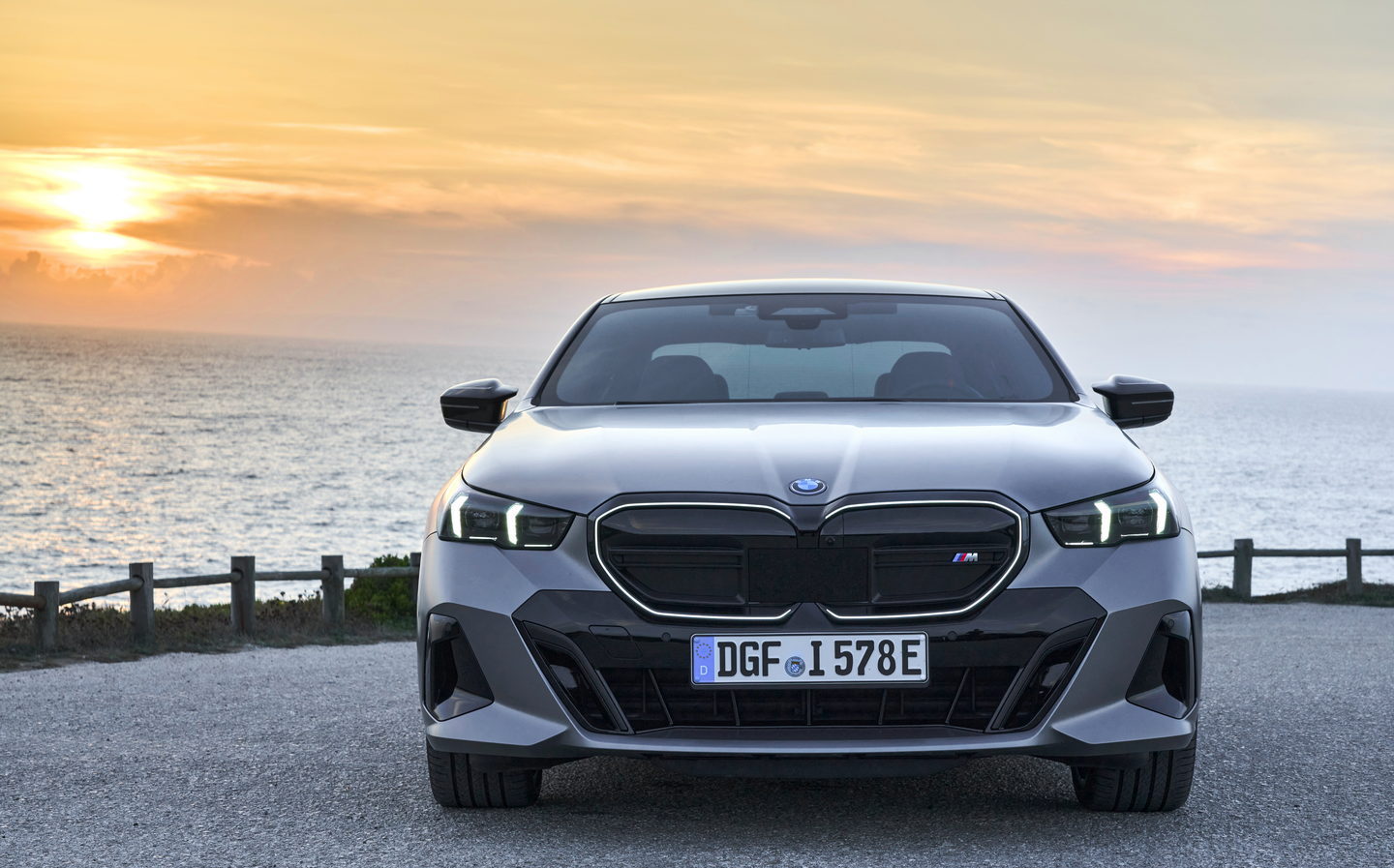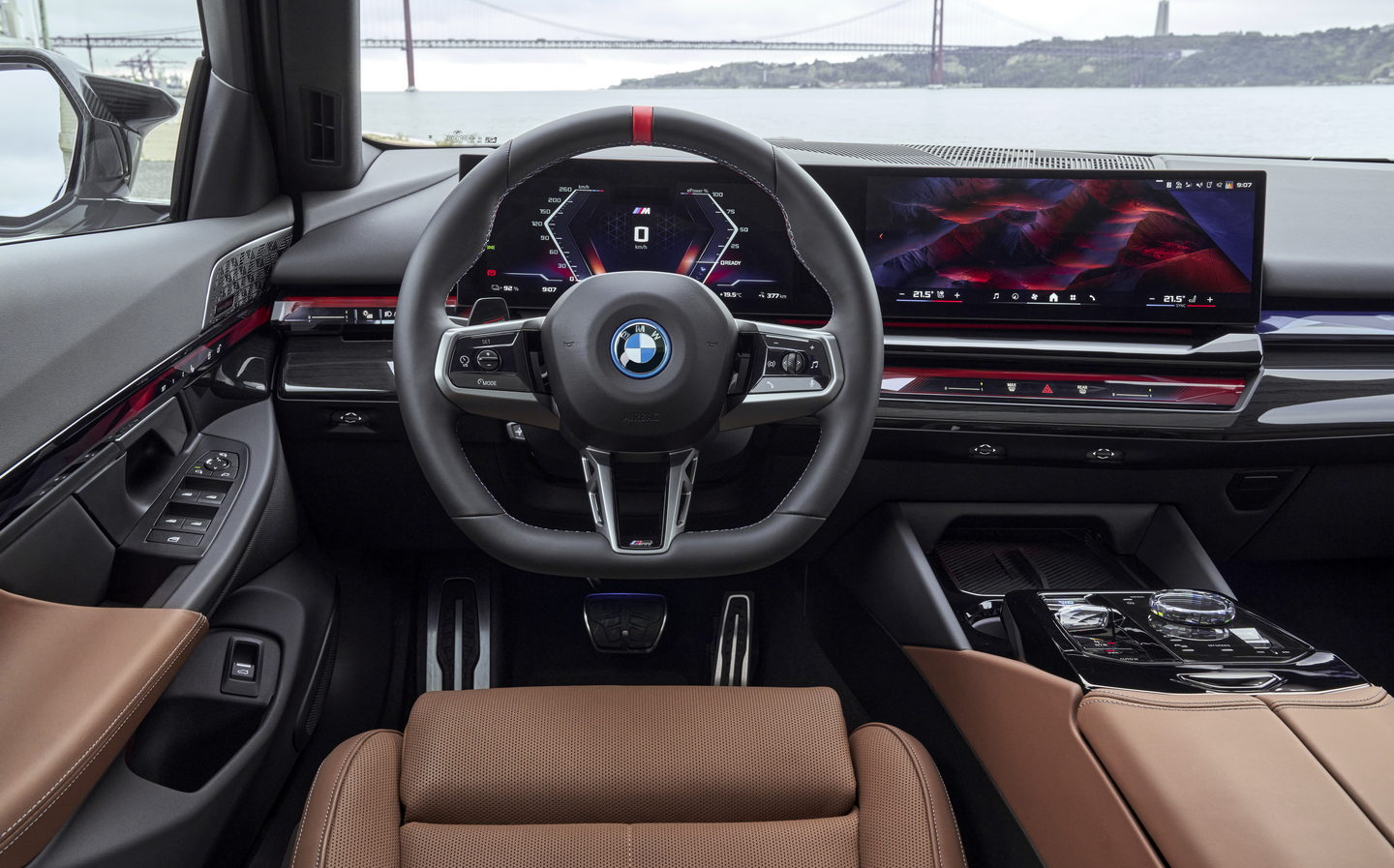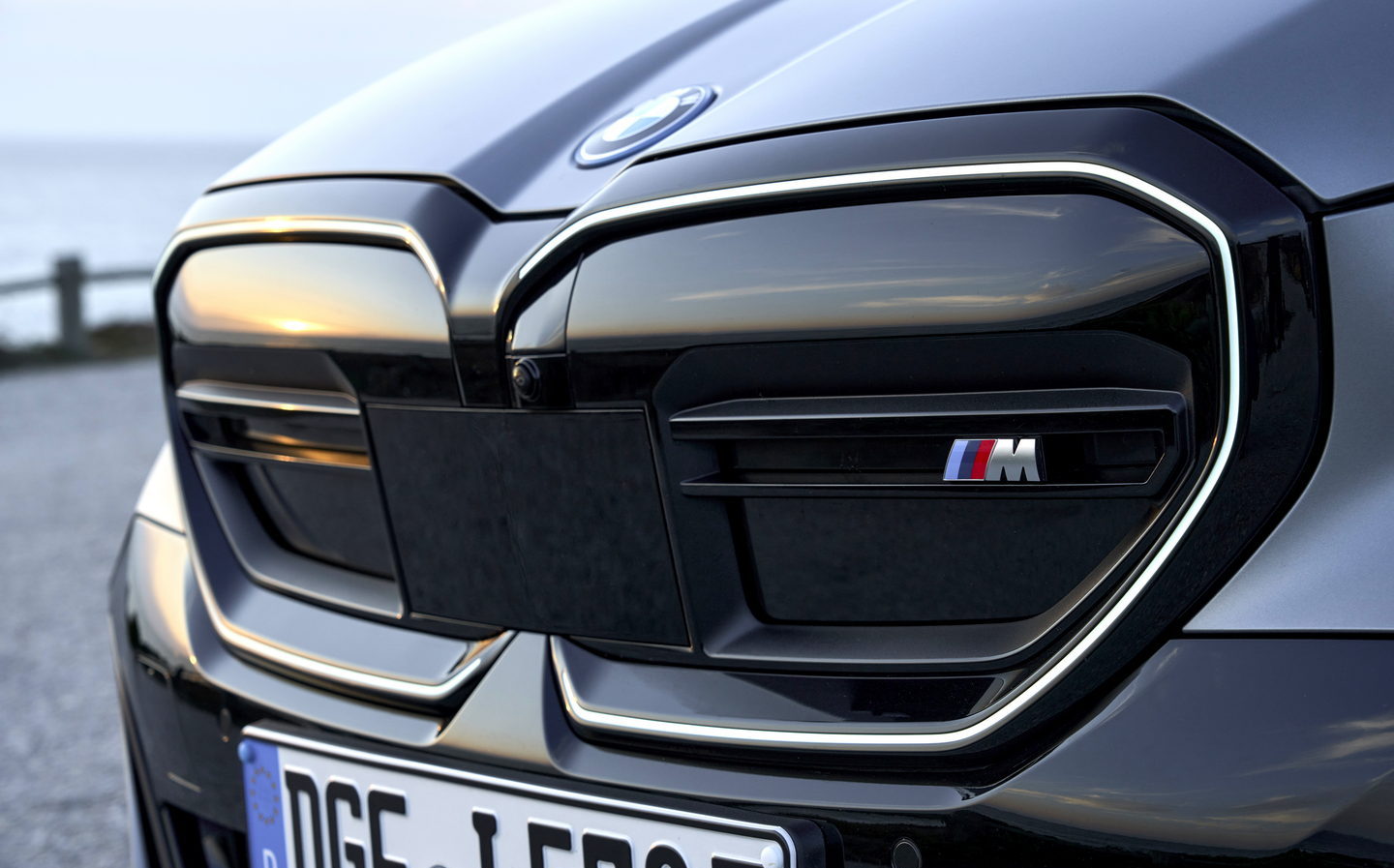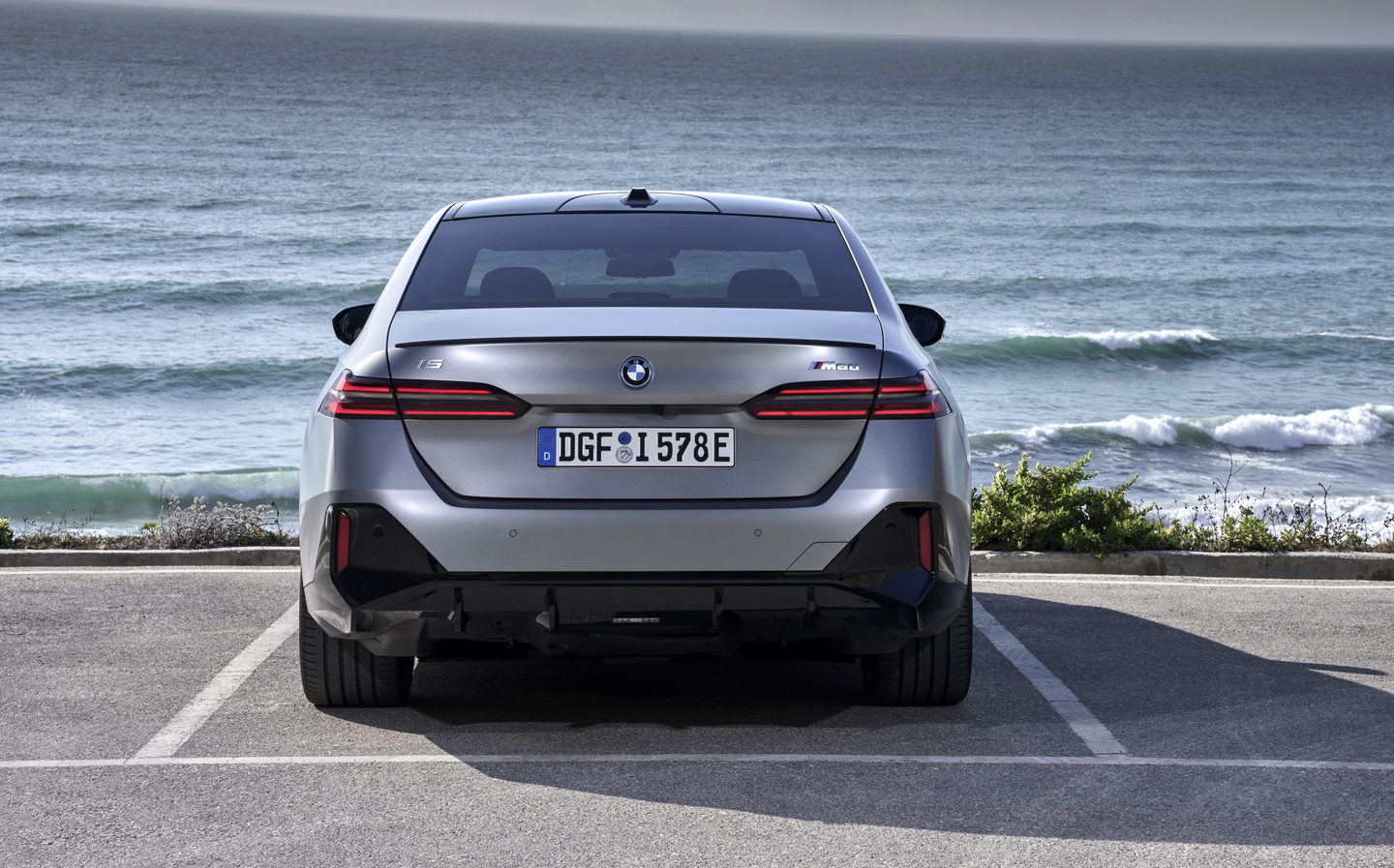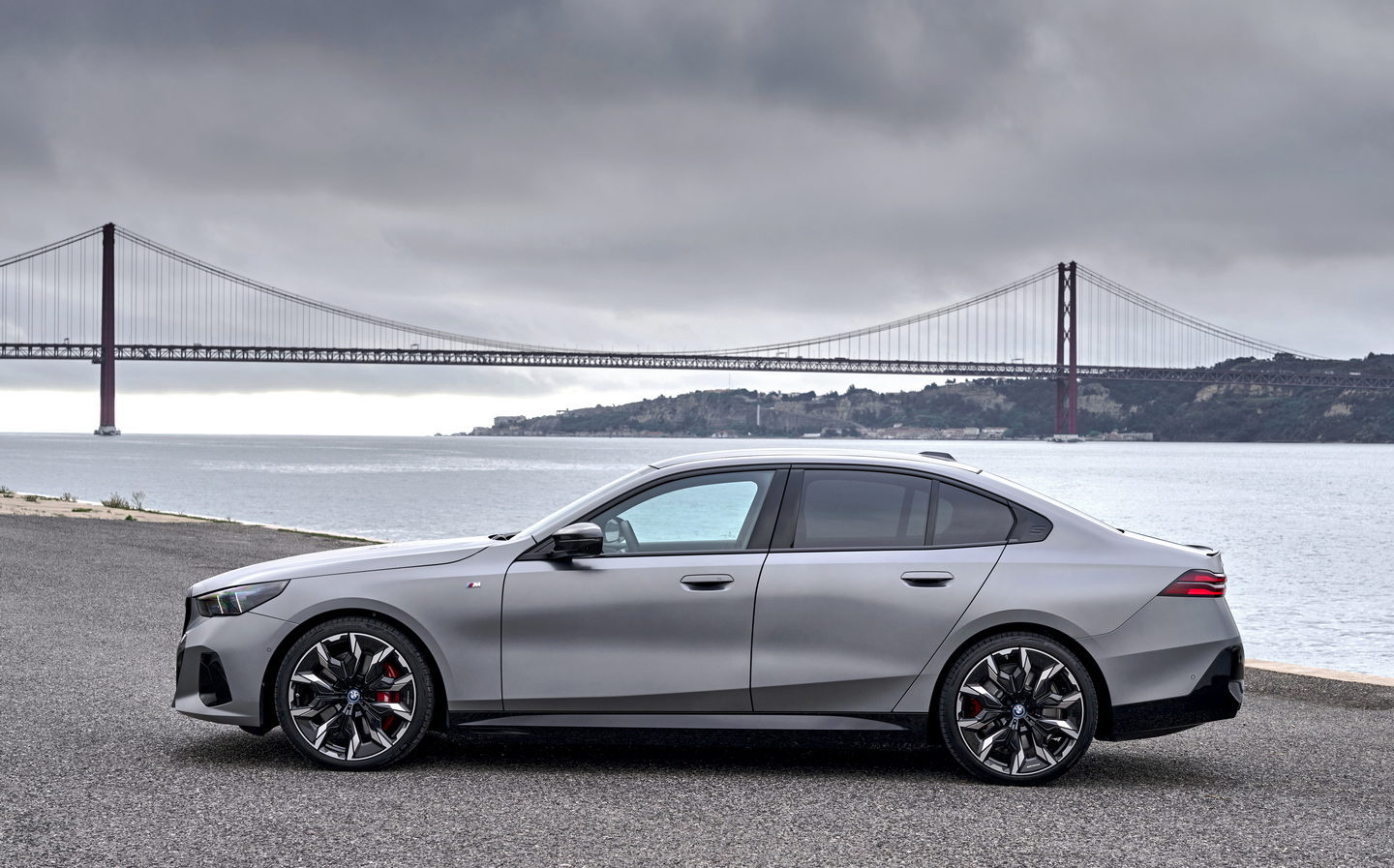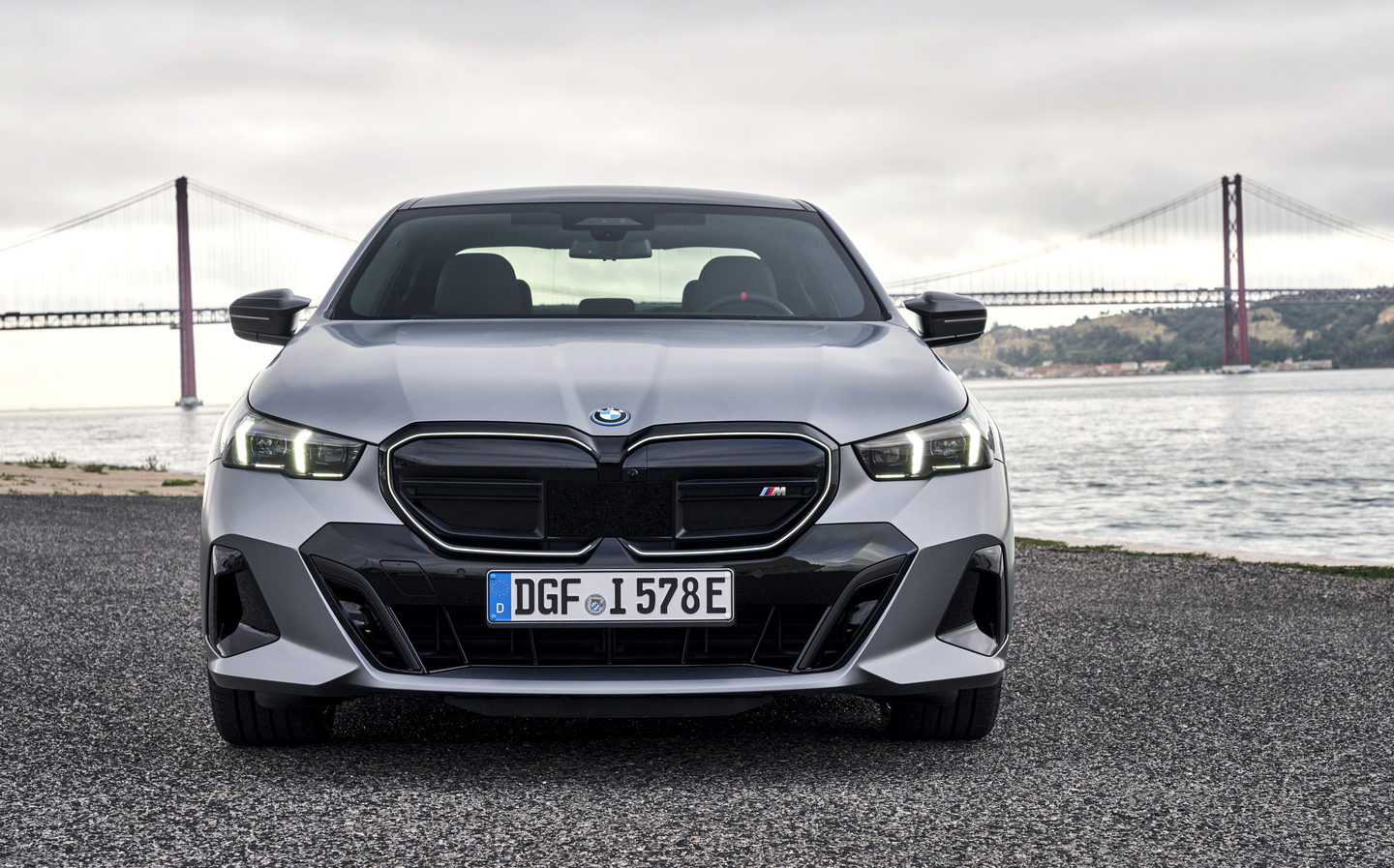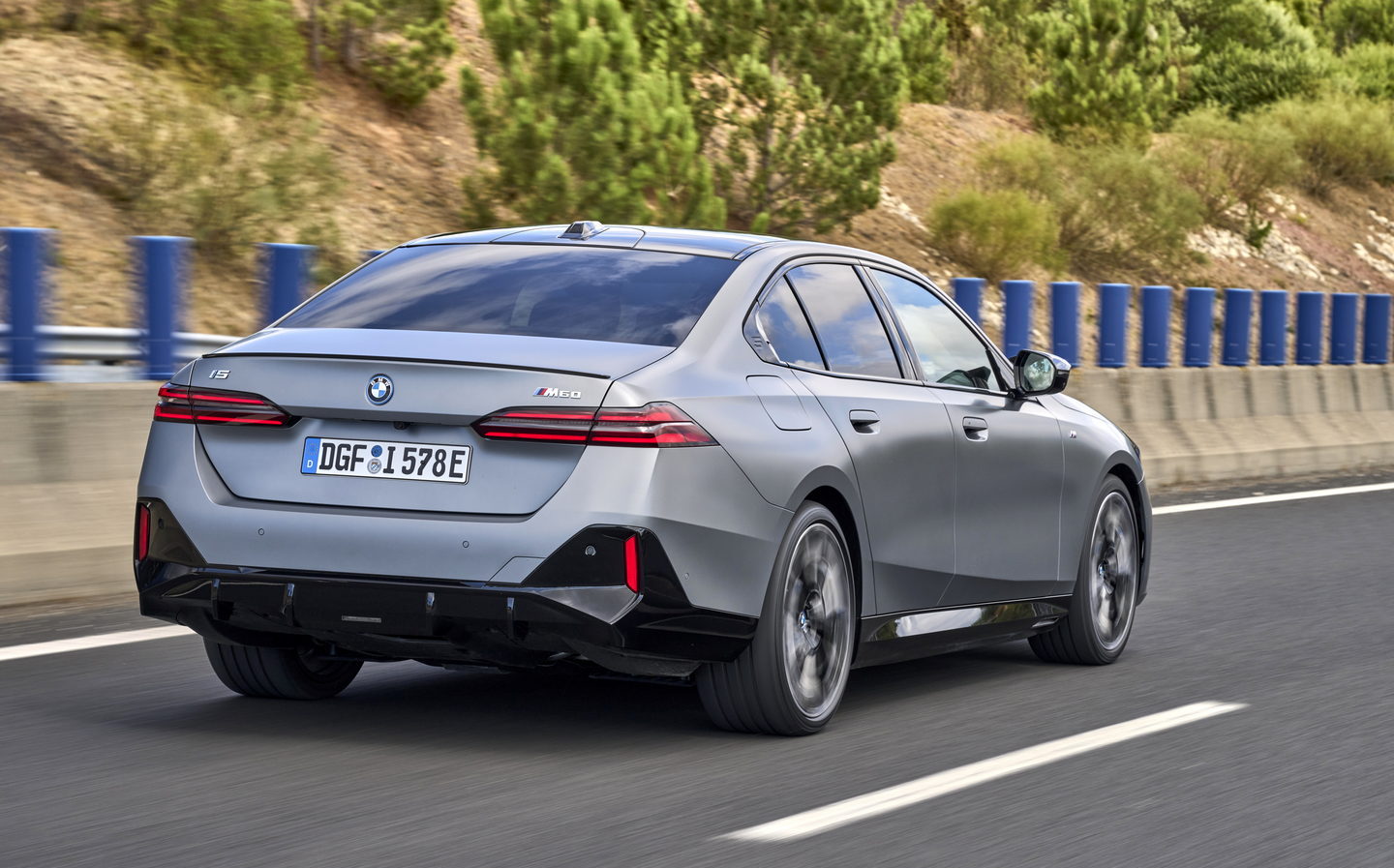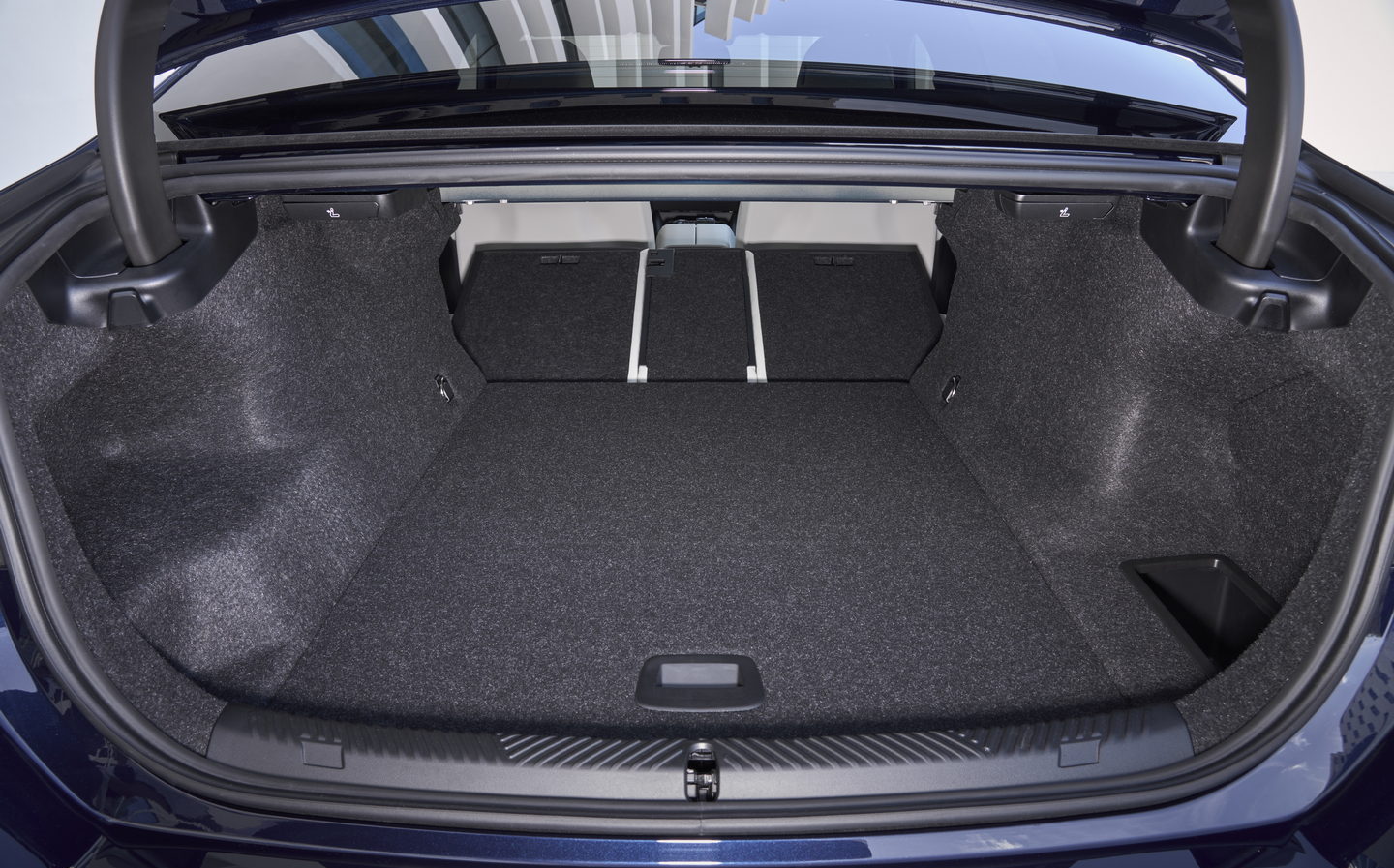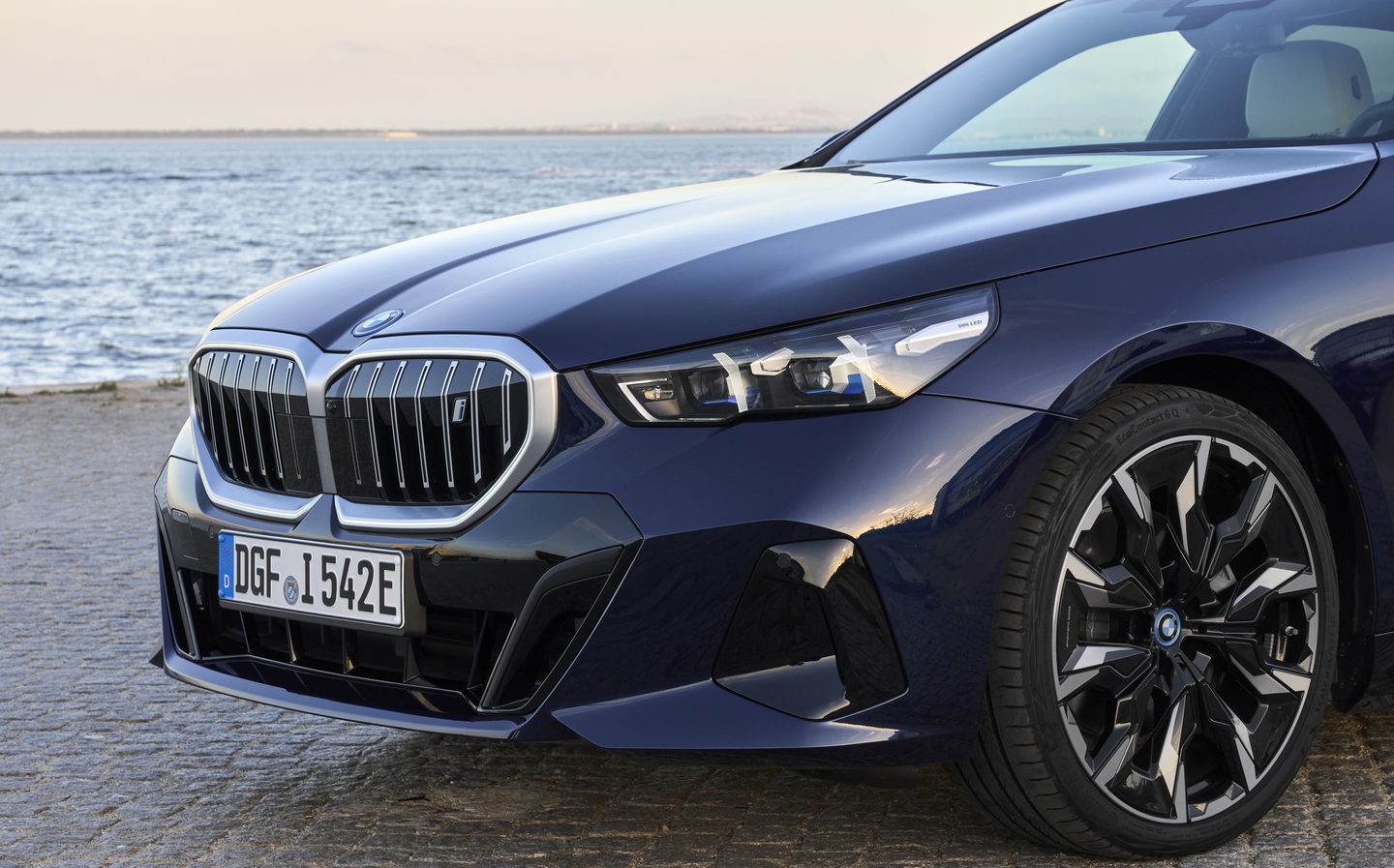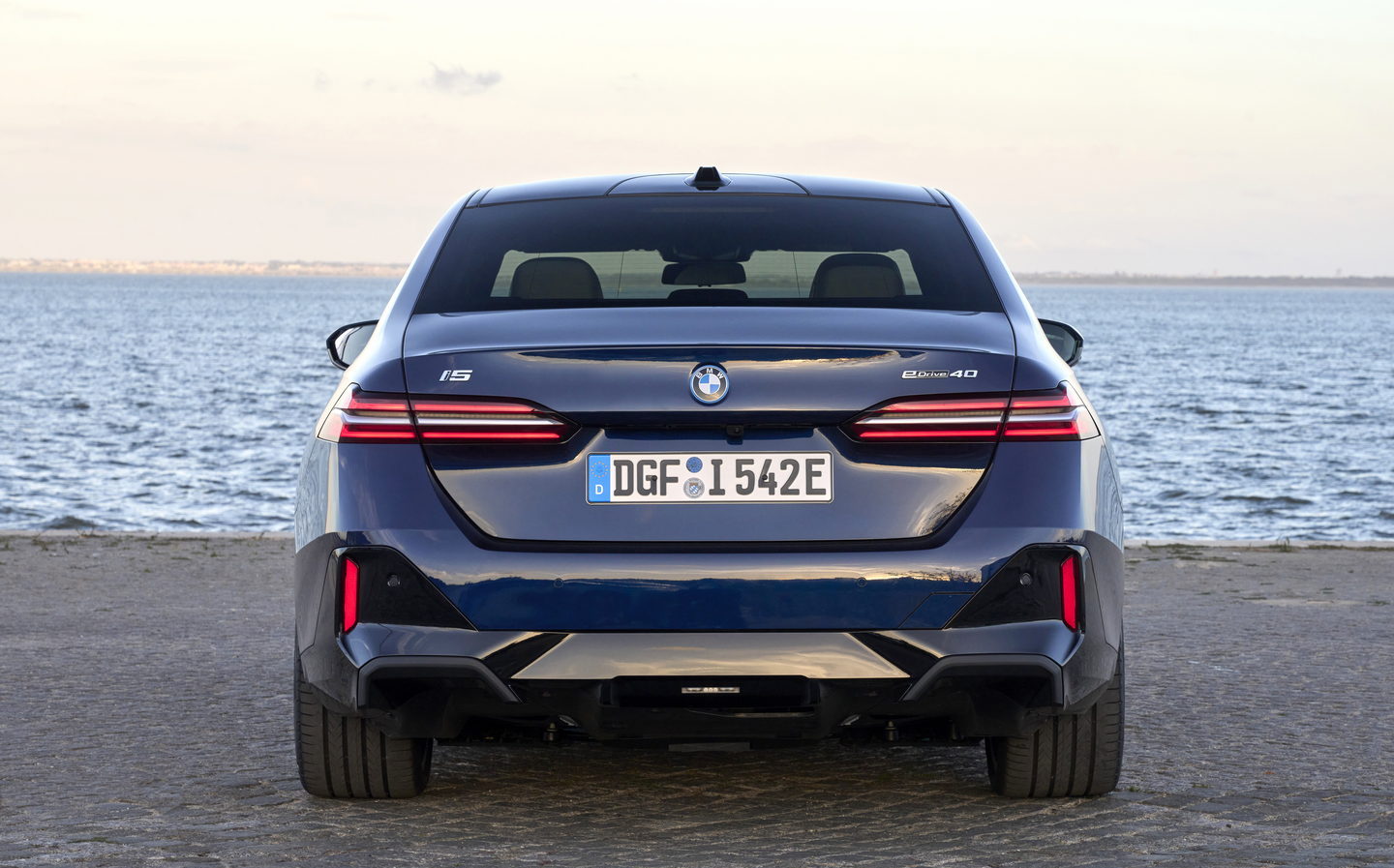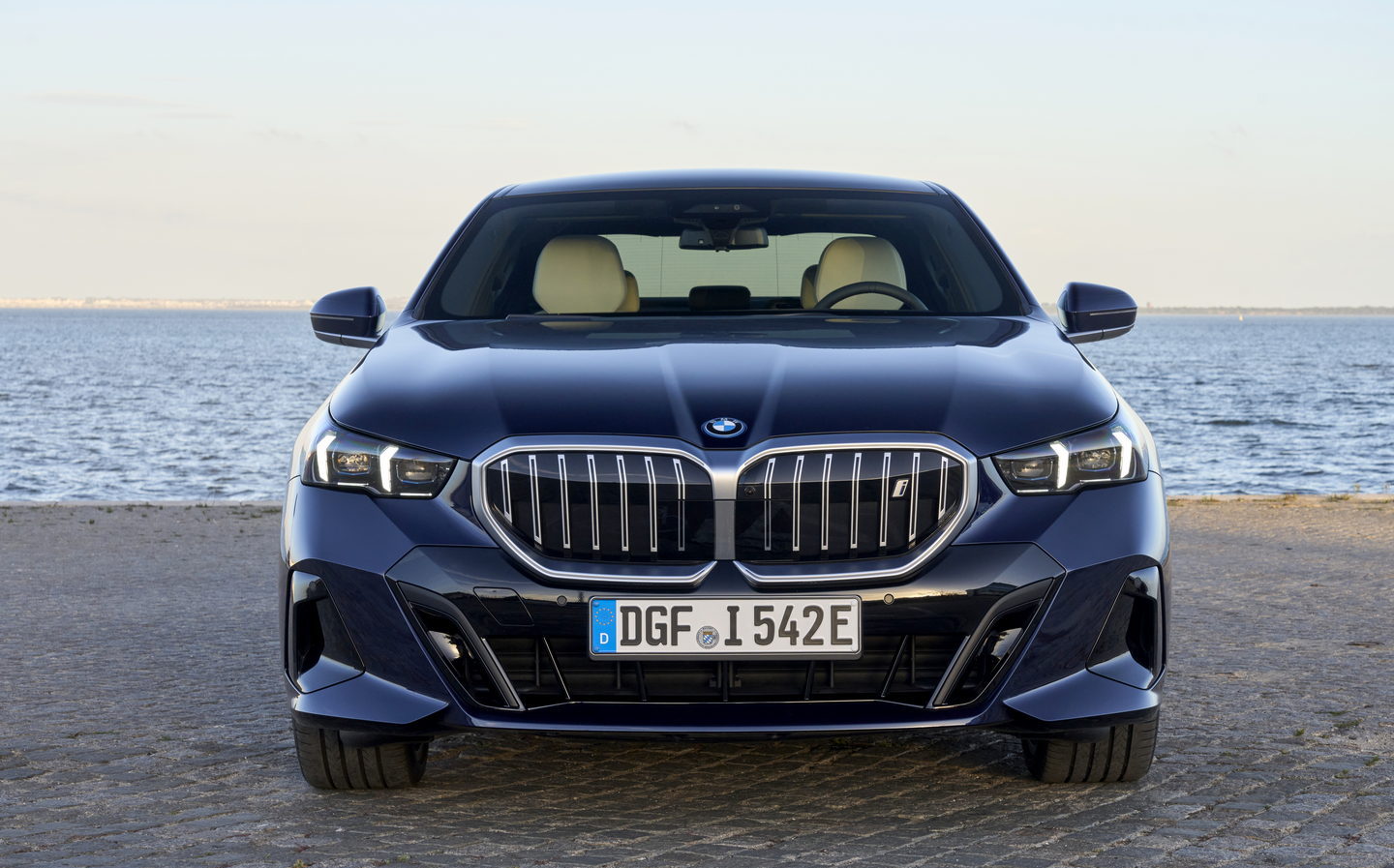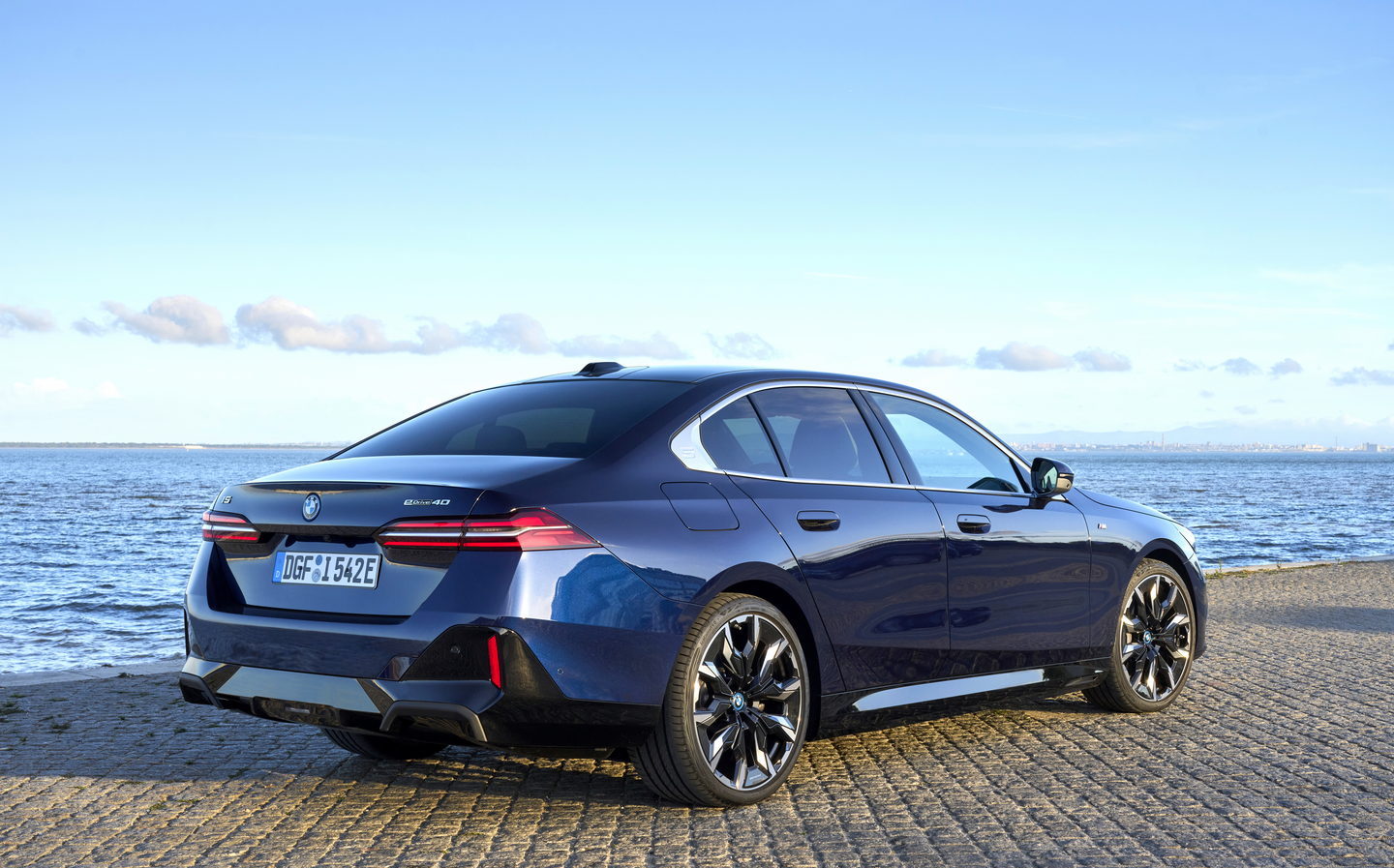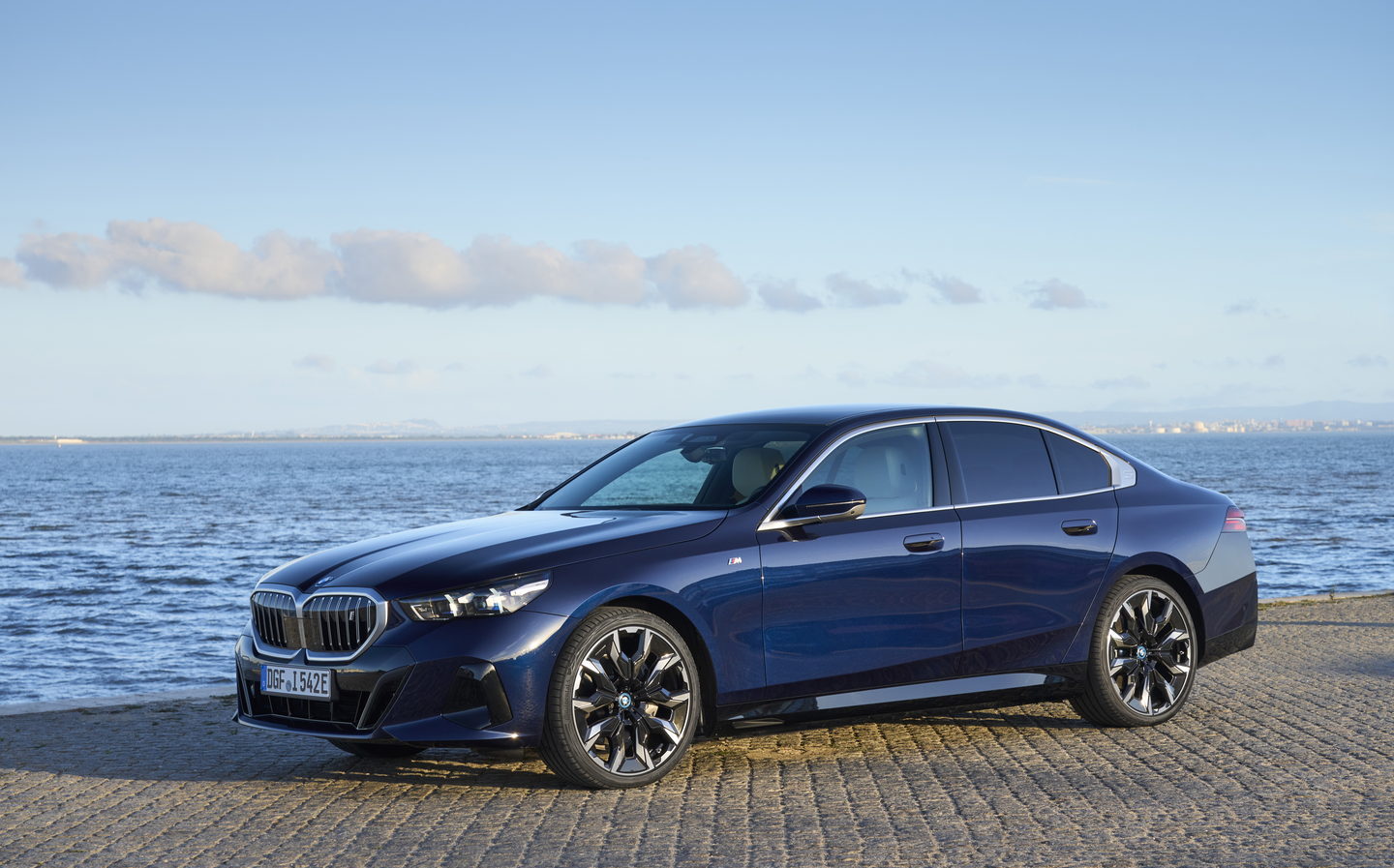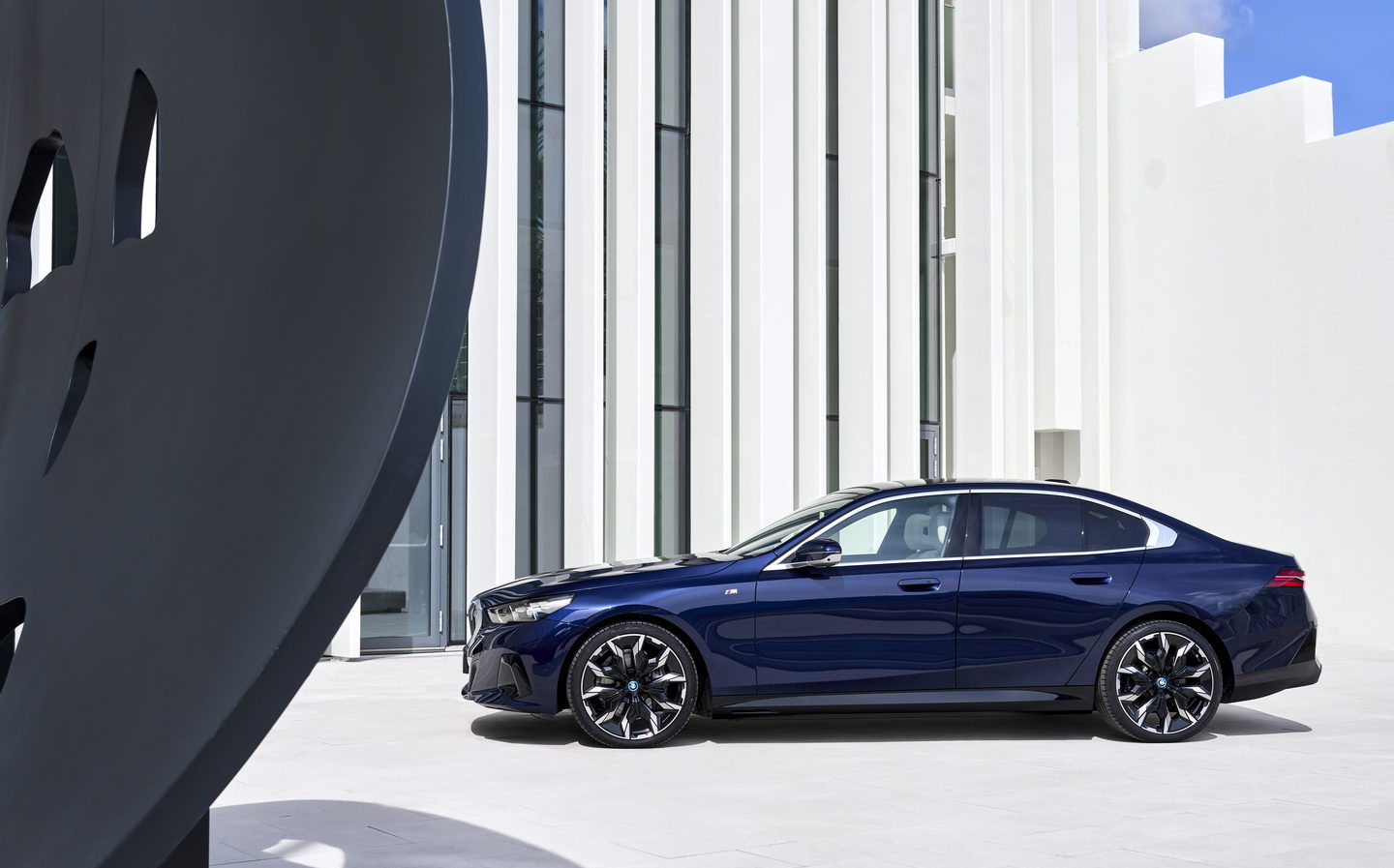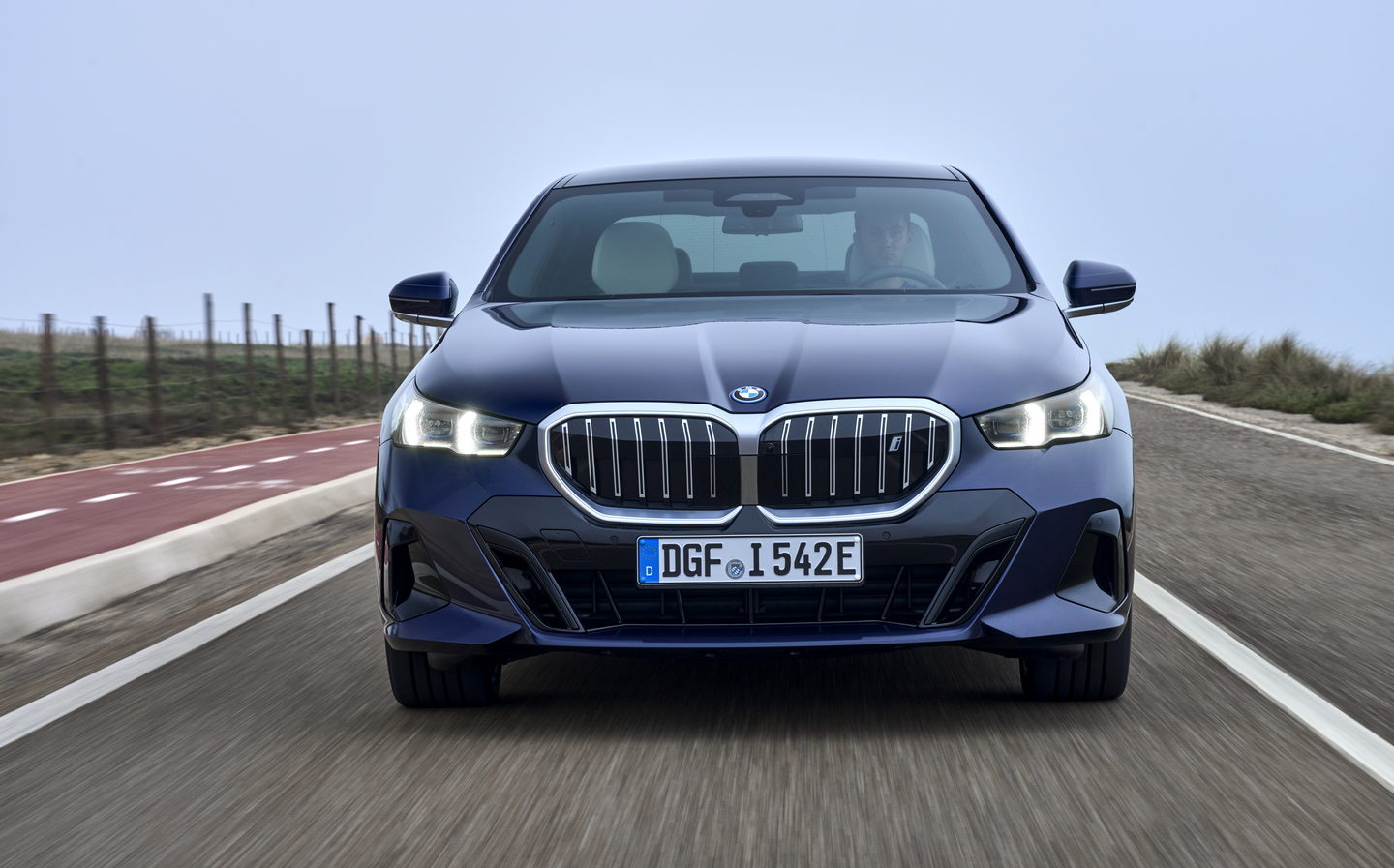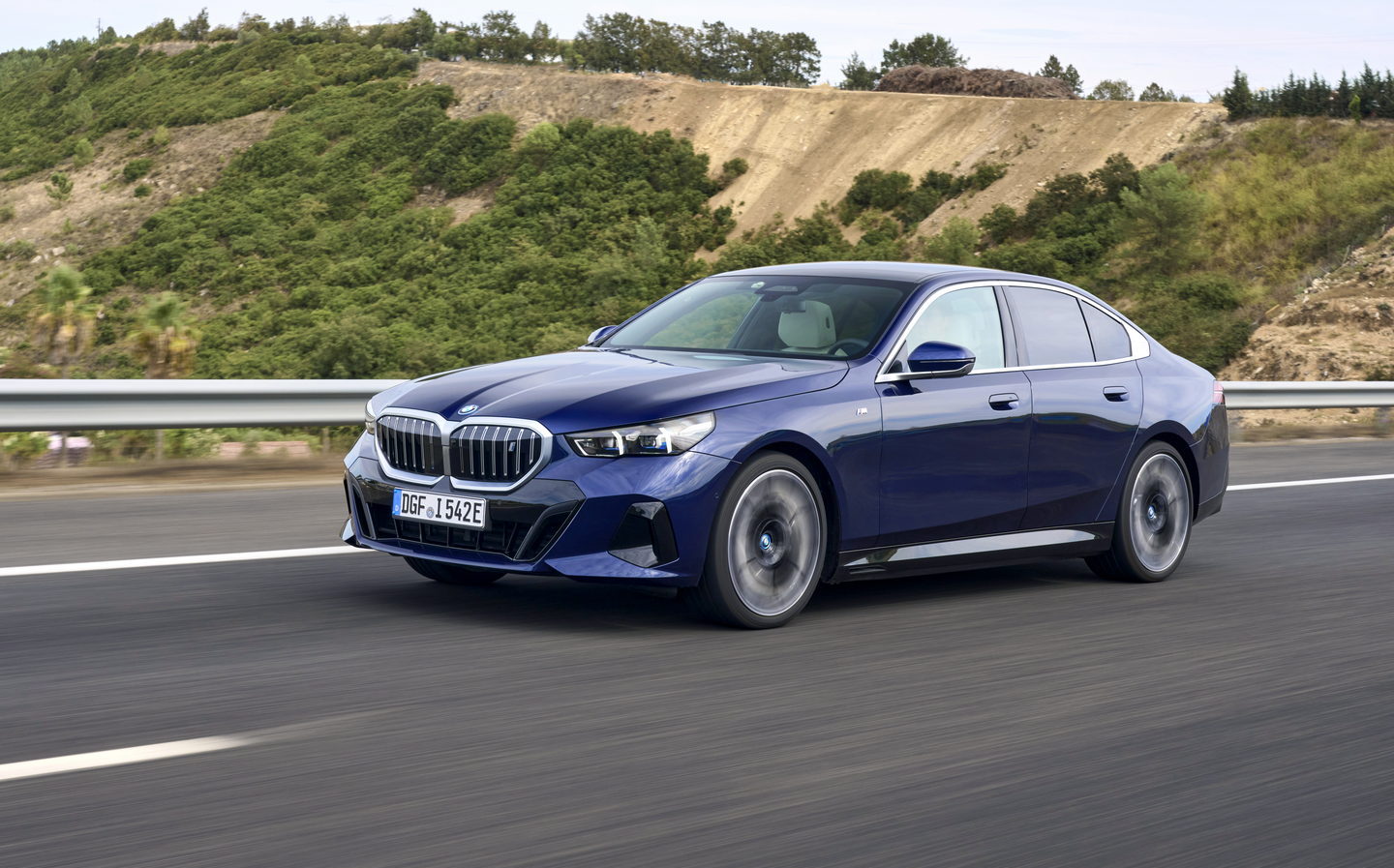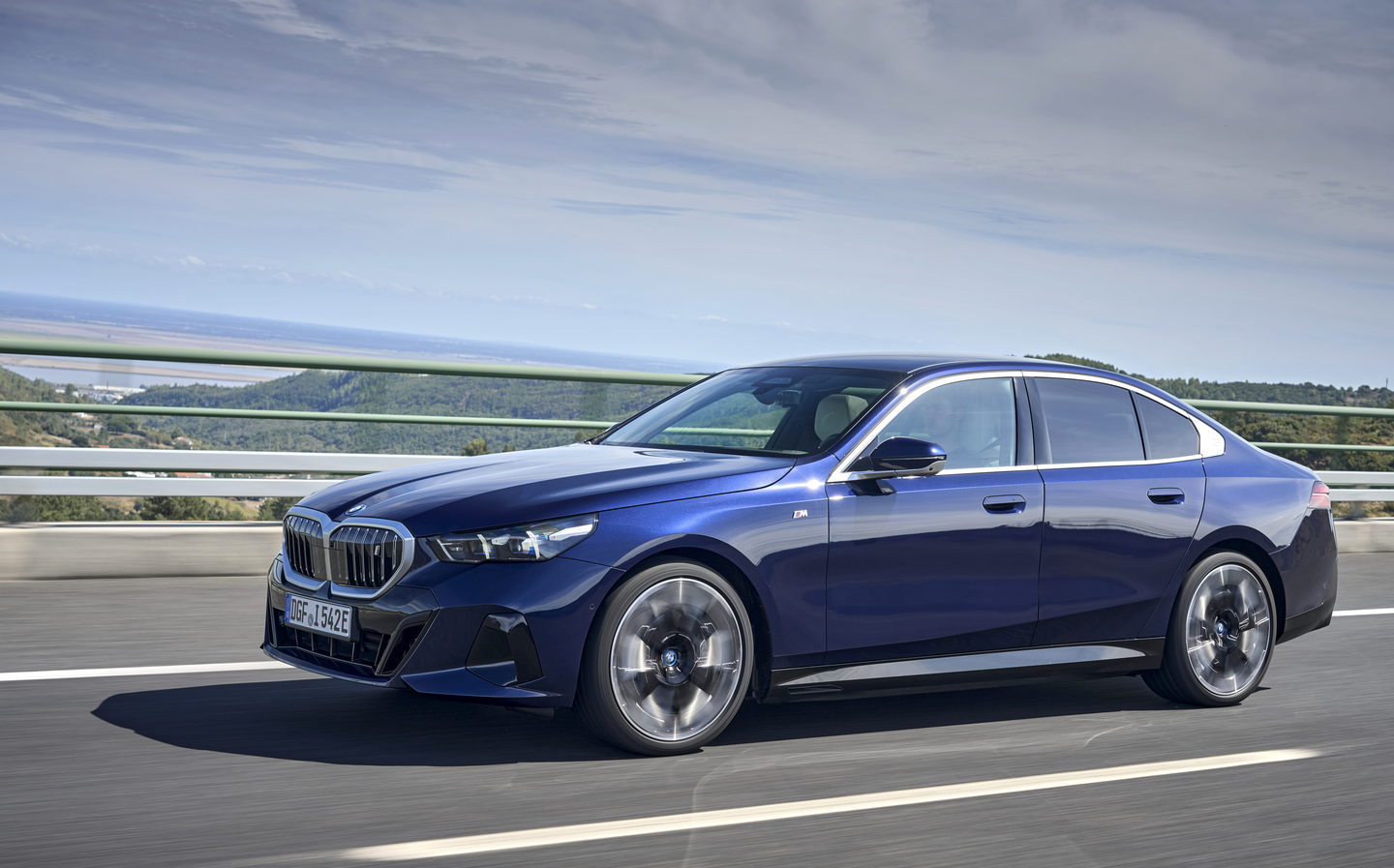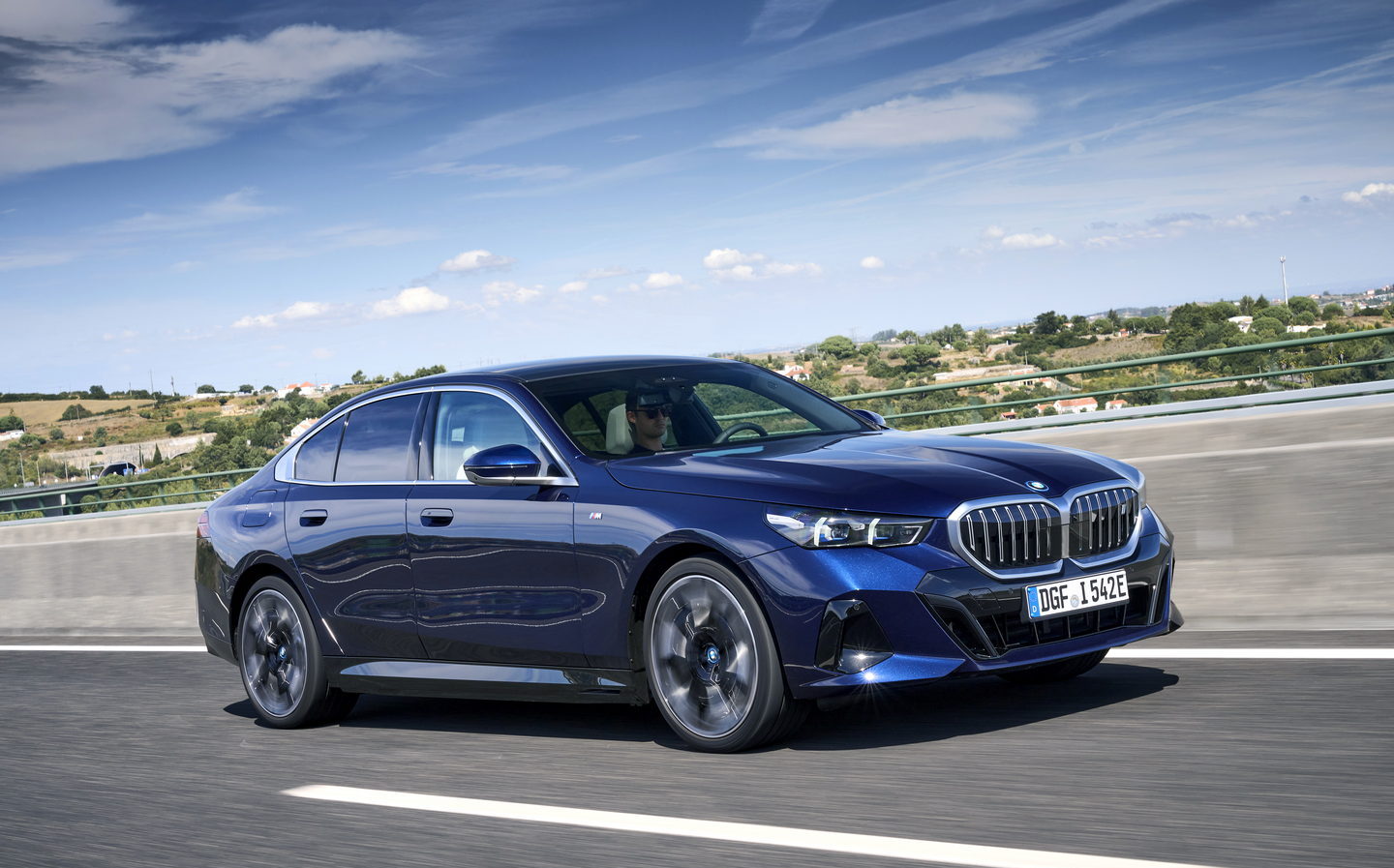BMW i5 review 2024: Electric 5 Series is just as we imagined — truly brilliant
The 'i's have it
The UK government may have decided to push back the deadline for all new cars to go hybrid or electric to 2035, but carmakers still have to meet the same tough targets on the proportion of EVs being sold, and so the fact that the electric version of the BMW 5 Series is spearheading its launch should come as no surprise.
In keeping with other electric BMWs it has a fancy name — i5, in this case — but make no mistake; this is most definitely the new 5 Series, and a car that is very much worthy of the badge.
It’s also very important car for BMW; a chance to reaffirm the brand’s position at the top of the saloon car market. The competition is stiff — the new 5 Series has to contend with the ever-popular Audi A6, the new Mercedes-Benz E-Class and a growing range of rivals from other brands, including the Lexus ES and Genesis G80.
Exterior design and rivals
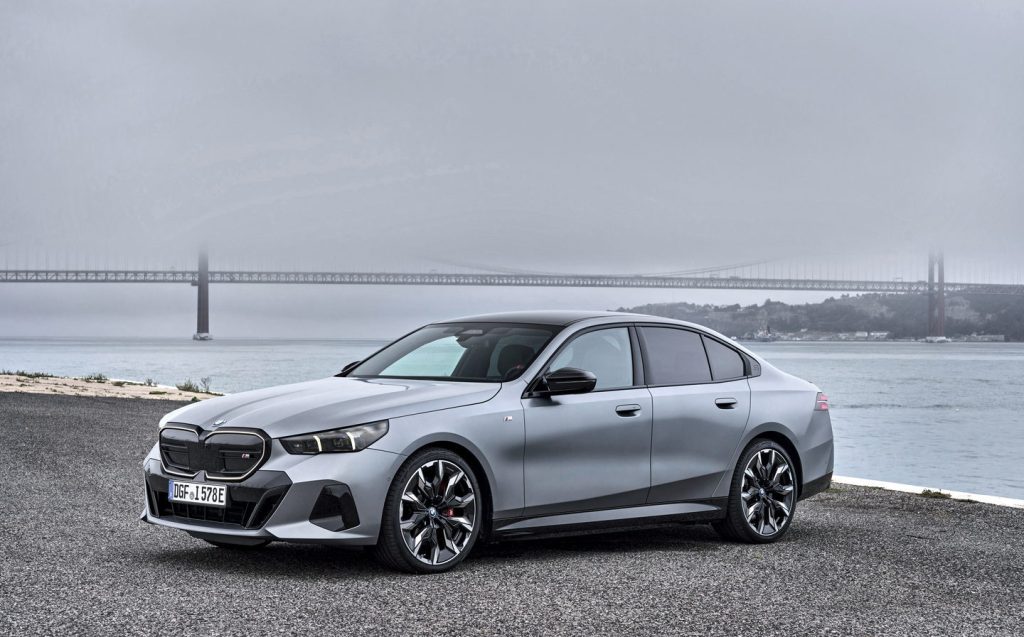
Perhaps unsurprisingly, BMW hasn’t changed the 5 Series’ styling too much, so the German company has simply worked to modernise its popular saloon. There’s a new nose with a new (and thankfully not enormous) front grille, and there are new lights, but the biggest change is arguably the cleaner flanks that give it a minimalist, modern profile.
The electric i5 versions get some slight tweaks to differentiate them from combustion-powered alternatives. The grille is slightly different, and of course there’s no exhaust pipe at the rear, but that’s about it unless you choose the most powerful i5 — the M60 xDrive. That comes with a much more aggressive looking front end with a black grille surround, and it sits 8mm lower than the standard i5 due to its sportier suspension.
That most powerful i5 is arguably the best-looking car in the 5 Series range so far, although the line-up is expected to grow with estate and high-performance M5 Competition models in future. But every version of the 5 Series is handsome in an understated sort of way, and that should stand it in good stead alongside the now slightly bulbous Mercedes E-Class and the ageing Audi A6, as well as other rivals.
Interior and practicality
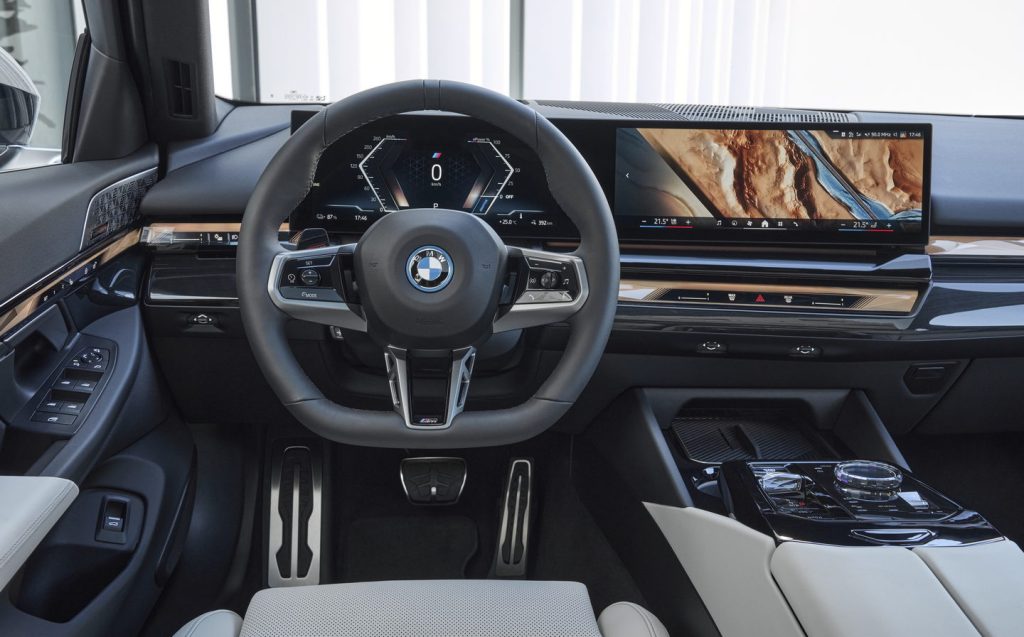
Regardless of the propulsion system under the skin, the new 5 Series comes with a new, much cleaner cabin that’s inspired by that of the larger 7 Series luxury limousine. That means there’s a more minimalist, modern approach that places greater emphasis on the ambient lighting strip that spans the dashboard and door cards.
However, the real focus is the new touchscreen infotainment system and digital instrument cluster, both of which are housed in a wide, slightly curved unit that covers more than half the dashboard’s width. For obvious reasons, BMW calls it the Curved Display, and it’s already in use in various other models in the range.
As with those other models, BMW has moved the majority of functions into the screens, and that has allowed it to take a lot of switchgear away from the dashboard.
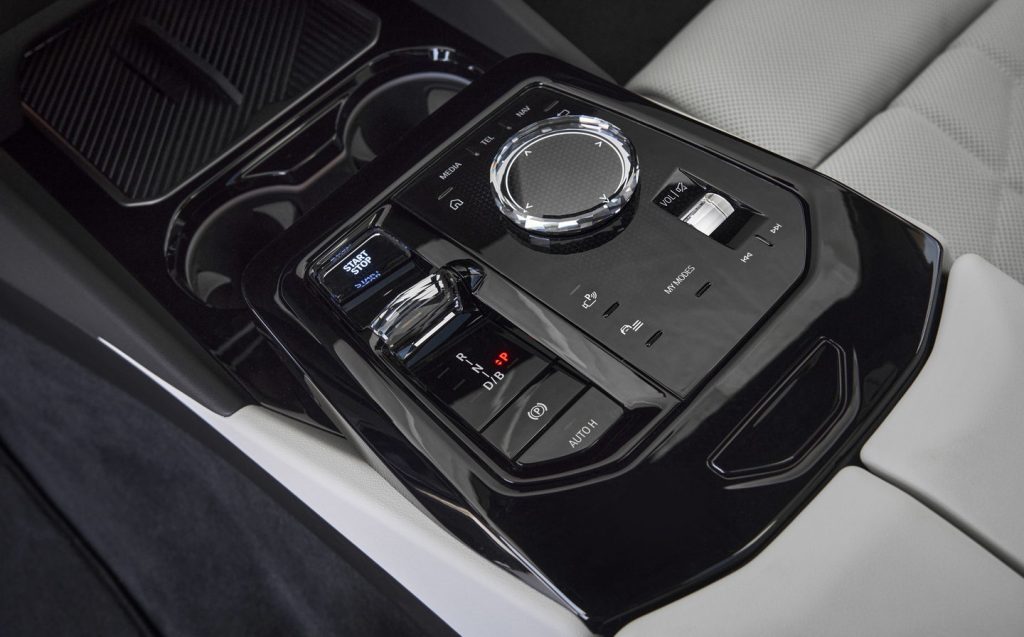
That leaves a fairly bare set of panels, and a fairly clean new centre console with glossy black buttons, a toggle-style gear selector and BMW’s iDrive rotary screen controller.
If you haven’t already gathered, there’s quite a reliance on shiny plastic — not least for the light strip and the buttons on the centre console, as well as the steering wheel controls — that we aren’t entirely sold on, and there are some other questionable materials around the window switches.
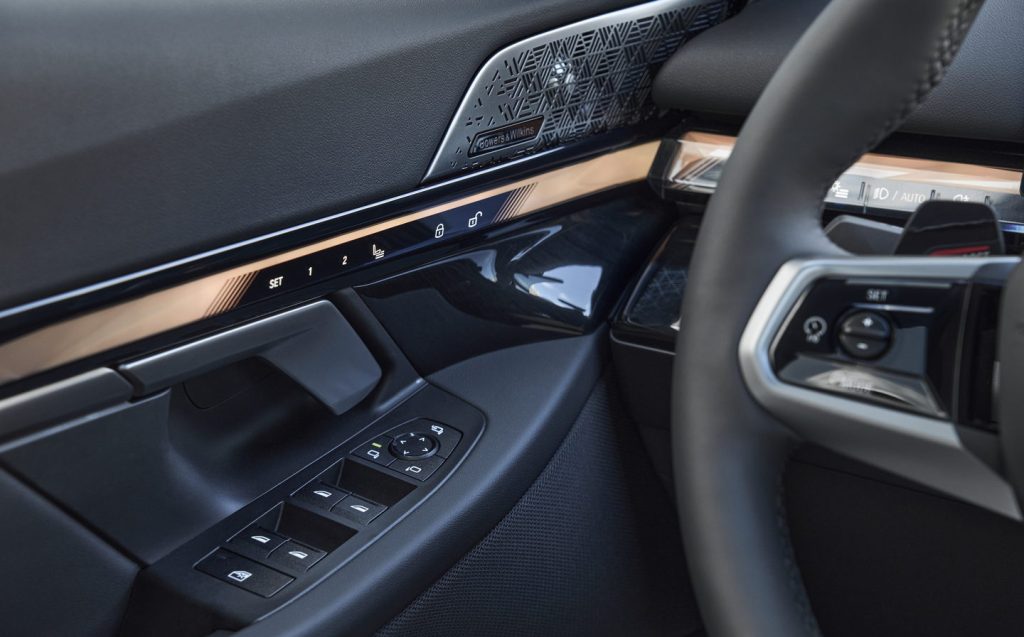
However, this is the first BMW to come with a leather-free interior as standard, and quality is generally as faultless as you’d expect. Most of the materials feel pretty premium, and even those that don’t are slotted into a well-engineered interior. Almost every button feels substantial and durable, and all the panels fit together perfectly.
The one exception is the rubberised air vent controls, which feel fiddly and ill conceived, as well as being slightly low-rent.
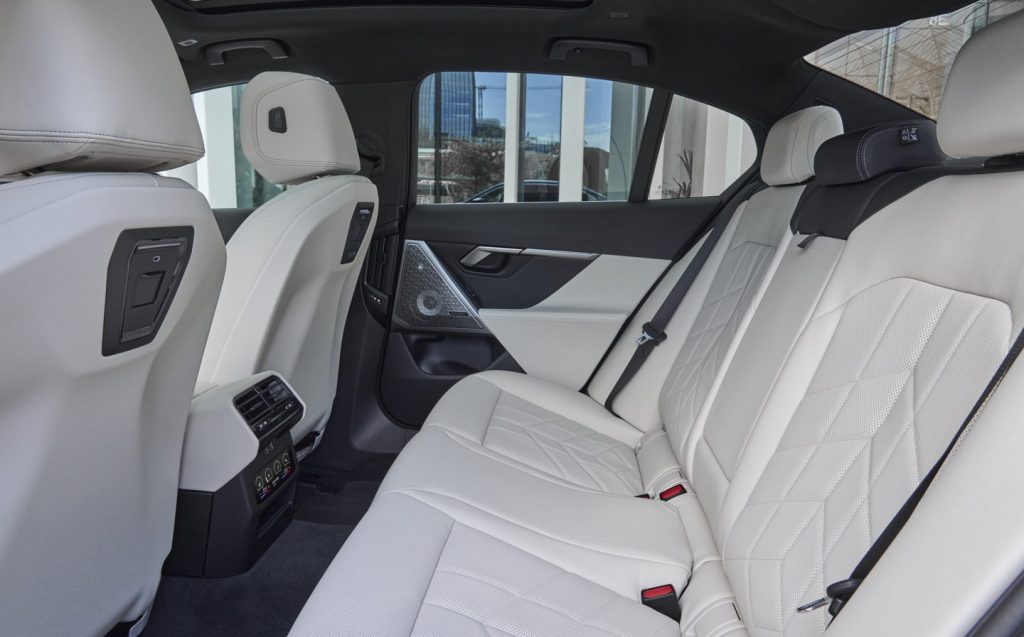
The cabin is generally well made then, and it’s roomy to boot (pun intended). There’s a 490-litre luggage space in the back of the i5, which puts the 354-litre space in the back of a Genesis Electrified G80 to shame. It’s also just 30 litres down on the non-electric 5 Series models.
And no matter which version you pick, there’s plenty of space in the back seats, where even tall passengers will find ample legroom and adequate headroom — although the central rear seat is quite so comfortable.
Technology and safety
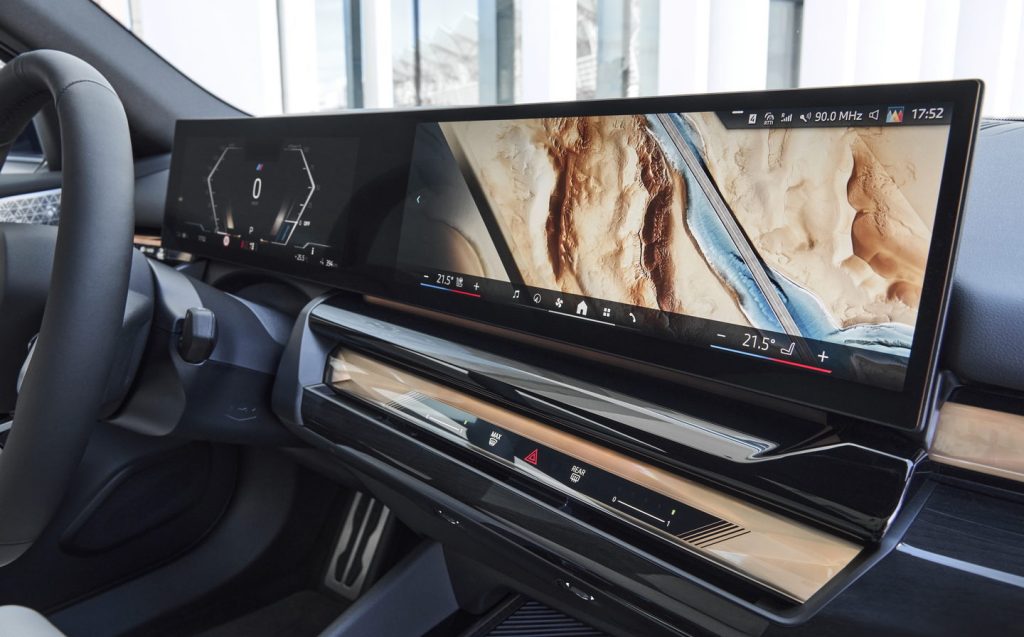
As BMW has made the Curved Display the heart of its new dashboard, it’s the obvious place to start. Although we’ve seen versions of this system introduced in everything from the X1 to the 7 Series, the i5 sees BMW’s new Operating System 8.5 make its debut, refining the previous technology with more intuitive displays and menus, as well as a host of new features.
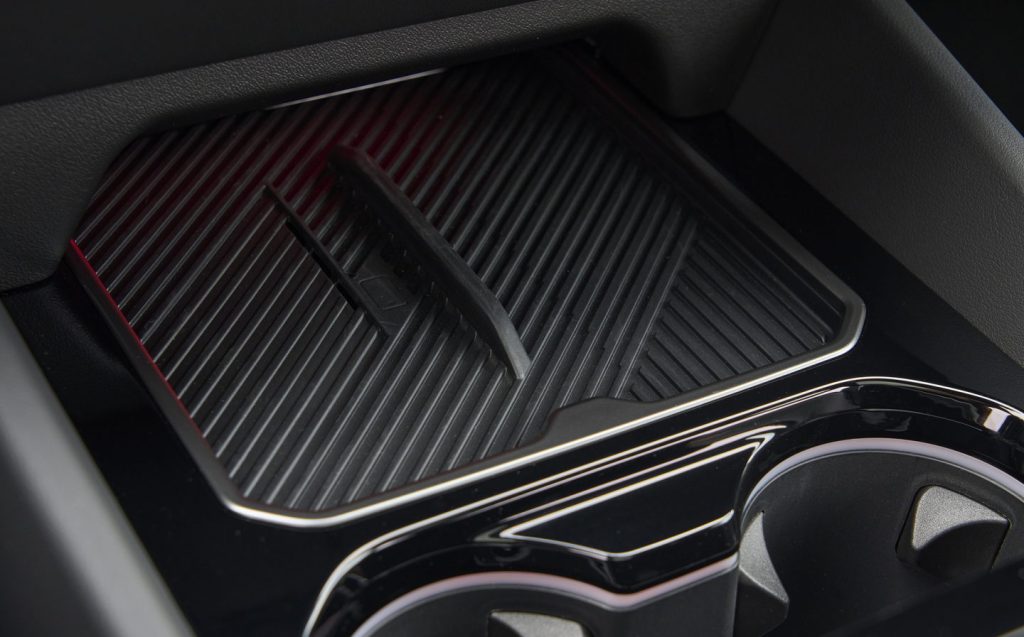
Chief among these is a revamped climate control menu, which was apparently needed to make the touchscreen heater controls more intuitive and accessible. The changes, which provide easier access to the various functions, have certainly improved things, but we can’t help but think conventional buttons would be better still, and they’d certainly be less distracting when driving.
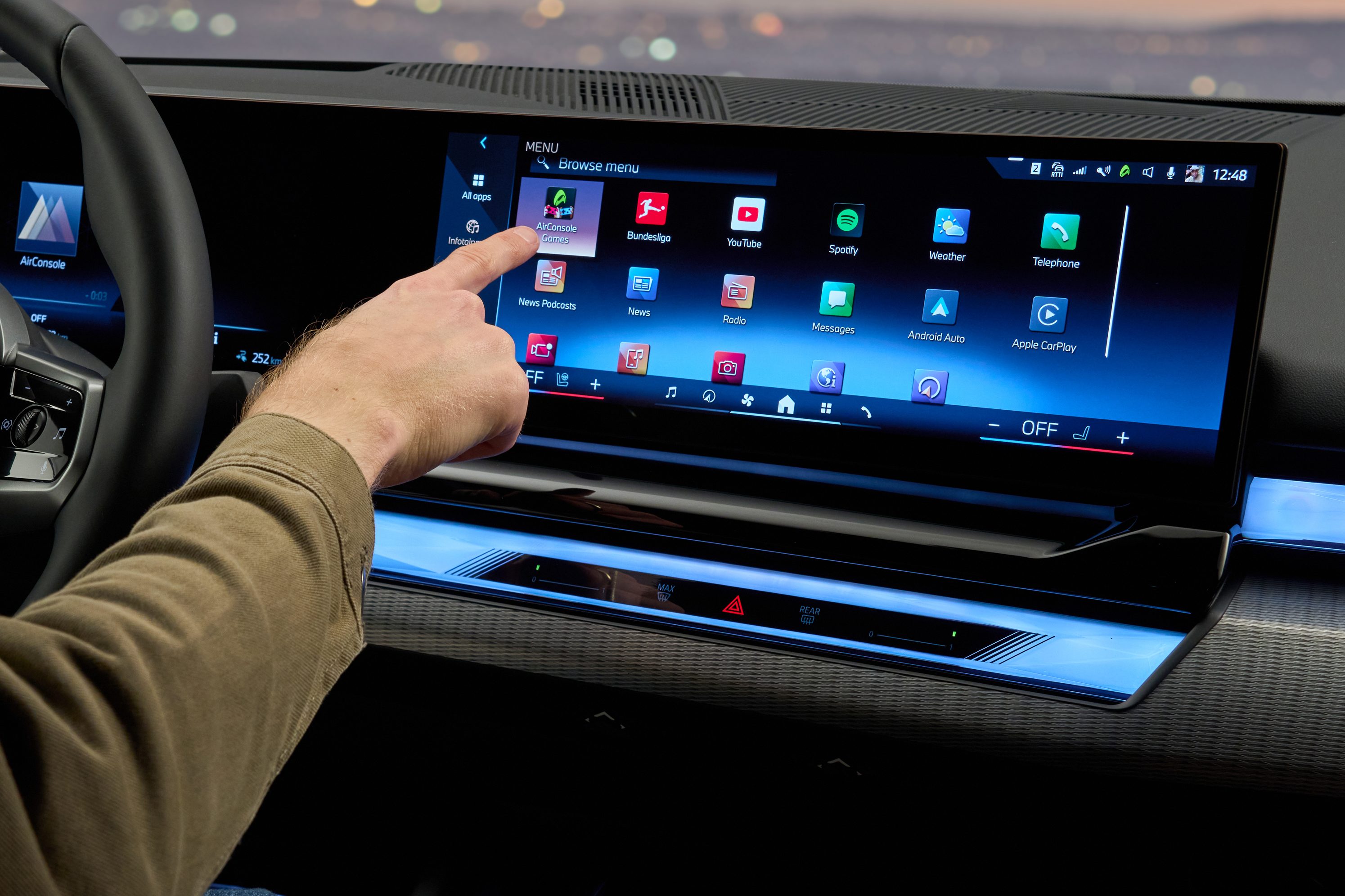
At least BMW continues with its iDrive rotary controller, which means you can navigate the screen without having to look at it for so long, or having to reach across its not-insignificant width. It’s the single feature that has put BMW infotainment systems up there with the best in the business for so long, although we should also give credit to the sharpness of the screens and the configuration options for the digital instrument cluster, both of which help to make the new 5 Series a very easy car to get along with.
But that isn’t the only bit of technology designed to make life easier. BMW is also offering the 5 Series with an AirConsole gaming system that turns the touchscreen into a kind of Nintendo pastiche, with players using their smartphones as controllers.

When the car is stationary, drivers and passengers alike can enjoy a range of games from cartoon-esque football to Mario Kart-style racing, and more games are in the pipeline. The idea is that you can keep yourself and your passengers entertained when the car is charging.
When you’re on the move, however, safety considerations mean the system won’t work, but there’s other safety tech to make life easier.
In some markets — namely North America and Germany — the 5 Series will offer hands-free motorway driving, complete with an eye-operated lane-change system. The car uses eyesight monitoring to sense you want to swap lanes, then executes the manoeuvre if and when it’s safe to do so.
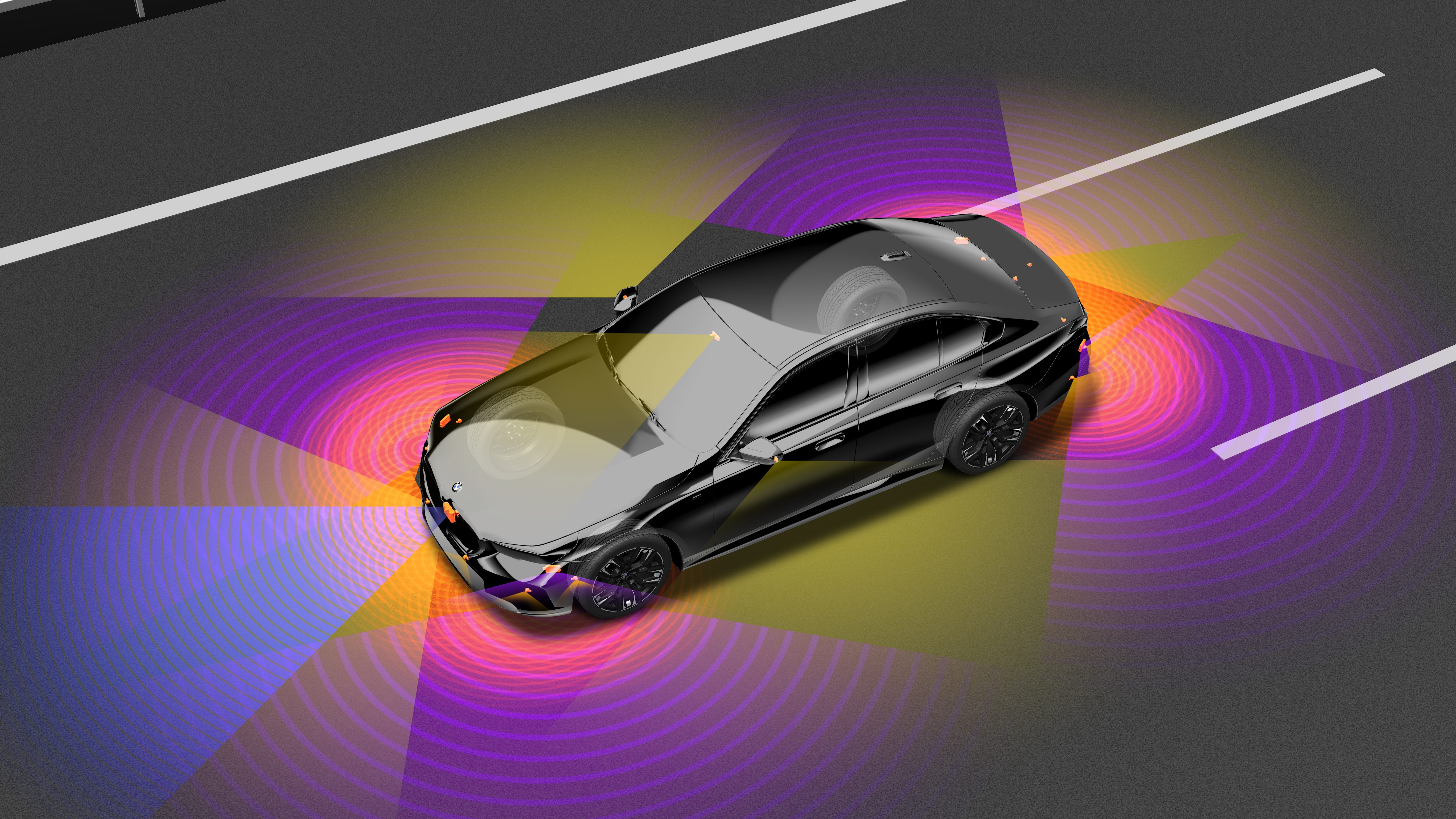
One of the safety functions, however, is altogether more irritating. The speed limit alert system will buzz at you angrily every time you exceed the speed limit, which is irritating enough, but it should be fine if you simply stick to the prescribed limits, right? Wrong.
The whole system depends on the car knowing what the speed limit is, and it isn’t always correct. Whether that’s traffic sign recognition tech letting the side down or gaps in the GPS knowledge, the system sometimes growls away at you for travelling at a perfectly legal speed. It’s infuriating in the extreme, and though it can be turned off, it will come on again when you restart the car.
We should caveat all this by saying BMW is far from the worst offender on this front (Lexus, Kia and Hyundai, we’re looking at you), and this technology is government-mandated so it’s going to become more common as time goes on.
Performance, battery range and charging speeds
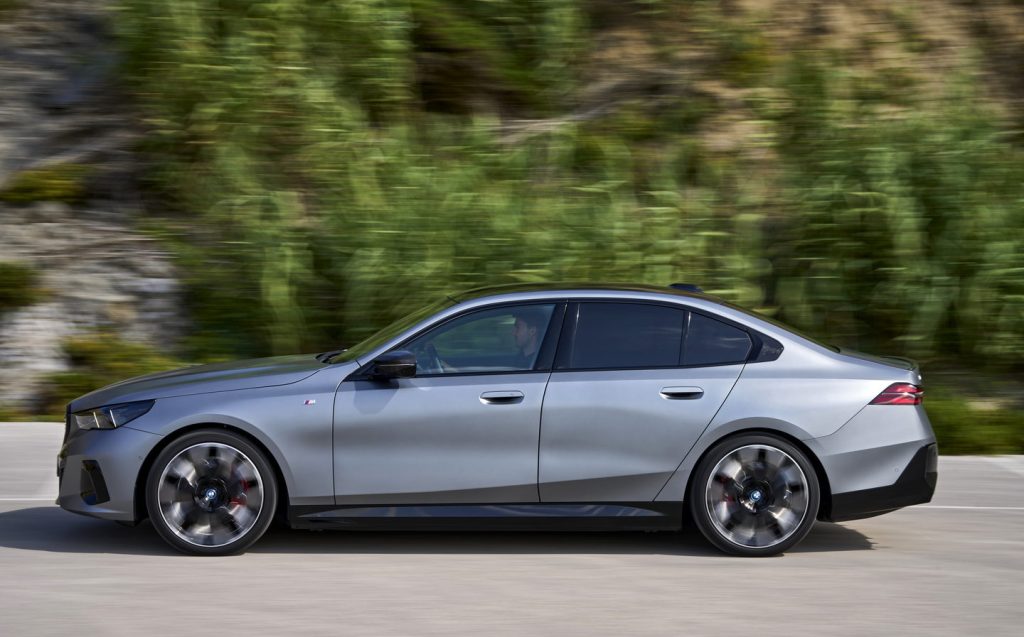
As before, the 5 Series will be offered with a choice of petrol, diesel and hybrid powertrains, but this is the first time BMW has built electric versions, both of which are dubbed i5.
There are two different versions — the eDrive40 and the M60 xDrive — but both come with the same lithium-ion battery with 81.2kWh of usable capacity. The former uses that to power a single electric motor that sends 335bhp to the rear wheels, while the latter has two motors; one at the front and one at the rear. Together, they give the car all-wheel drive and a massive 593bhp.
Naturally, the M60 xDrive is the faster of the two, getting from 0-62mph in a stonking 3.8 seconds before hitting its top speed of 155mph. The eDrive40 is still brisk, though, with a six-second 0-62mph time and a 120mph top speed. That’s ample performance, and it’s certainly enough to ensure the eDrive40 will be the i5 of choice for most customers.
That’s primarily because it’s the cheaper option, but also because it offers the greater range on a single charge. Whereas the M60 xDrive will manage between 283 and 321 miles on a charge according to the official efficiency tests, the eDrive40 manages between 309 and 362 miles under the same conditions.
In the real world, you probably won’t achieve that kind of range with either car— certainly not at motorway speeds — but both should manage 200 miles on a charge fairly regularly, and the eDrive40 should give you a sporting chance of topping 250 miles in the right conditions.
Both cars get the same 205kW DC charging system, which means the battery can be recharged from 10 to 80 per cent in half an hour, assuming you can find a charger rapid enough to deliver. But even if you’re stuck with one of the less powerful 22kW AC chargers you sometimes find at hotels, the battery can be recharged completely in a little over four hours.
Charging using a 7kW home charger, however, will take a fair bit longer, but it should still be possible overnight.
Ride and handling
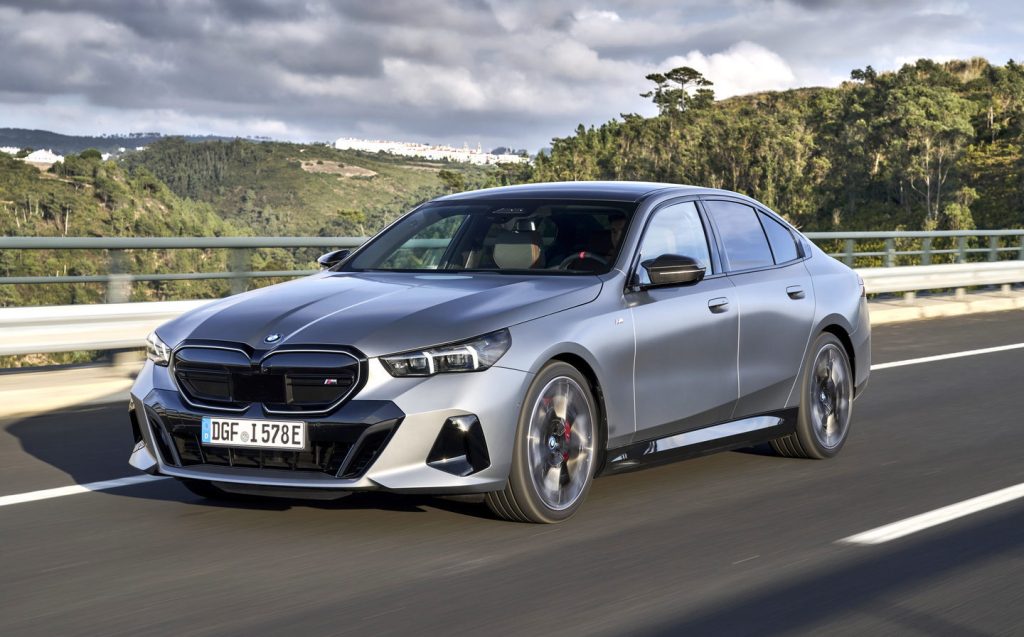
Sporty handling was the old 5 Series’ forte, and the new model looks set to carry on where its predecessor left off. Admittedly, the i5 is at an advantage compared with non-electric models in one way, thanks to its low-slung battery and compact electric motors, which keep the centre of gravity low, and both versions of the electric 5 Series drive impressively well.
That’s partly down to the steering, which is precise and predictable, although it feels a tad rubbery in the comfort-orientated setting. Switch it into Sport mode, though, and it’s sharp and precise, and the car responds instantly.
It doesn’t mask the car’s size by any stretch — it’s still a big saloon — but it does make it easier to manage in any situation.
That steering is paired with a sense of great balance from both the eDrive40 and the M60 xDrive, and that comes in very useful with the latter model, which can get a bit twitchy thanks to its immense power.
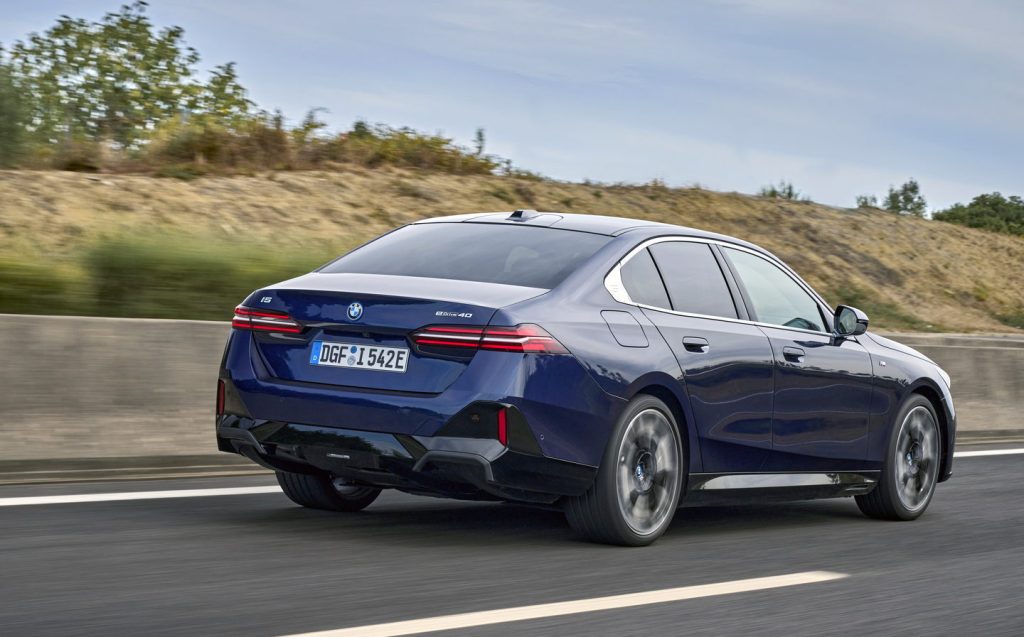
Both cars are aided by great suspension set-ups, too, although the M60 xDrive is predictably stiffer than its sibling, which means it has fractionally less body roll than the already impressive eDrive40 in corners.
Even so, the ride is informative, rather than savage and jagged, and the motorway ride is fairly supple even in Sport mode. Neither car is as comfortable as, say, a Genesis Electrified G80, even in the most comfortable settings, but the extra body control means a little extra thump through the seat when you’re driving around town is a reasonably small price to pay.
Perhaps the biggest difference between the two models is the braking, because the M60 xDrive gets a more powerful motorsport-inspired system than the standard eDrive40. That’s well worth having, because while the M60’s brake pedal feels powerful and effective and confidence-inspiring, the eDrive40’s brakes feel like they have to be worked much harder to stop the 2.2-tonne saloon in anything approaching the same distance.
Pricing and on-sale date
At just over £74,000 for the cheapest i5, the electric 5 Series is not a cheap option, and it’s about £5,000 more expensive than the cheapest Mercedes EQE. However, to get an EQE with comparable performance, you’ll have to spend at least £77,000, and that makes the i5 look like slightly better value.
Compare the more conventionally powered 5 Series models, and it looks even more competitive, with the 520i M Sport saloon starting at £51,000. The 5 Series’ arch rival, the latest Mercedes E-Class, comes in at £55,000.
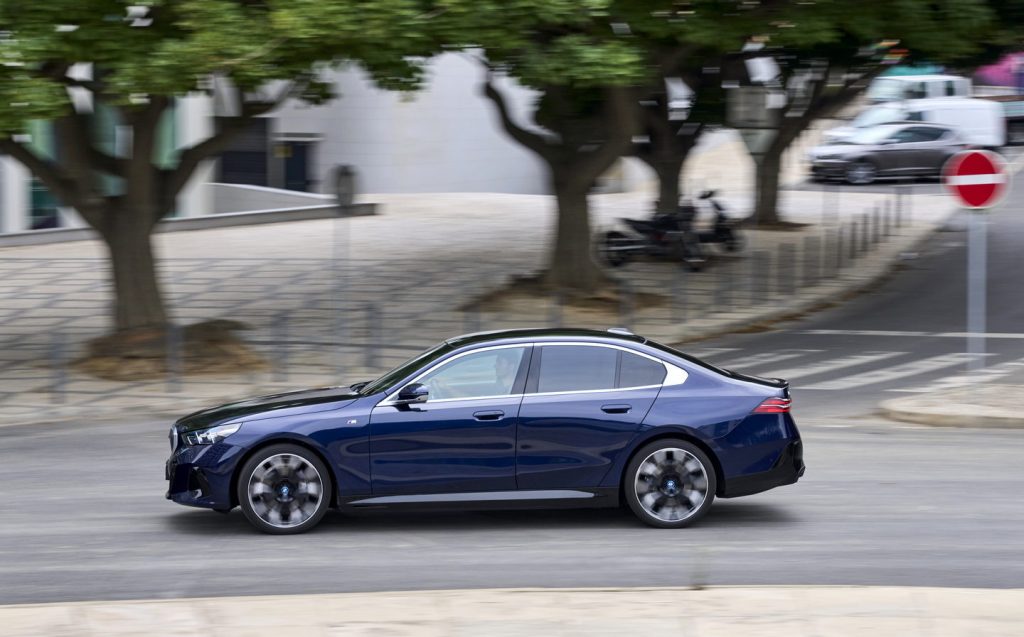
And BMW gives you plenty for your money, with every 5 Series getting two-zone climate control, wireless phone charging and sports seats, as well as a reversing camera, LED lights and alloy wheels. Every car also gets the massive Curved Display with both the digital instrument display and the latest-generation touchscreen, as well as a selection of driving modes the driver can use to set the car up in the desired manner.
For all that, though, it’s worth noting that the most powerful i5 model – the M60 xDrive – comes with a huge £97,745 price tag that’s more akin to the high-performance sports saloons that occupy this part of the market. However, with so much power on board, it’s more than capable of competing in that arena.
Verdict: BMW i5 review
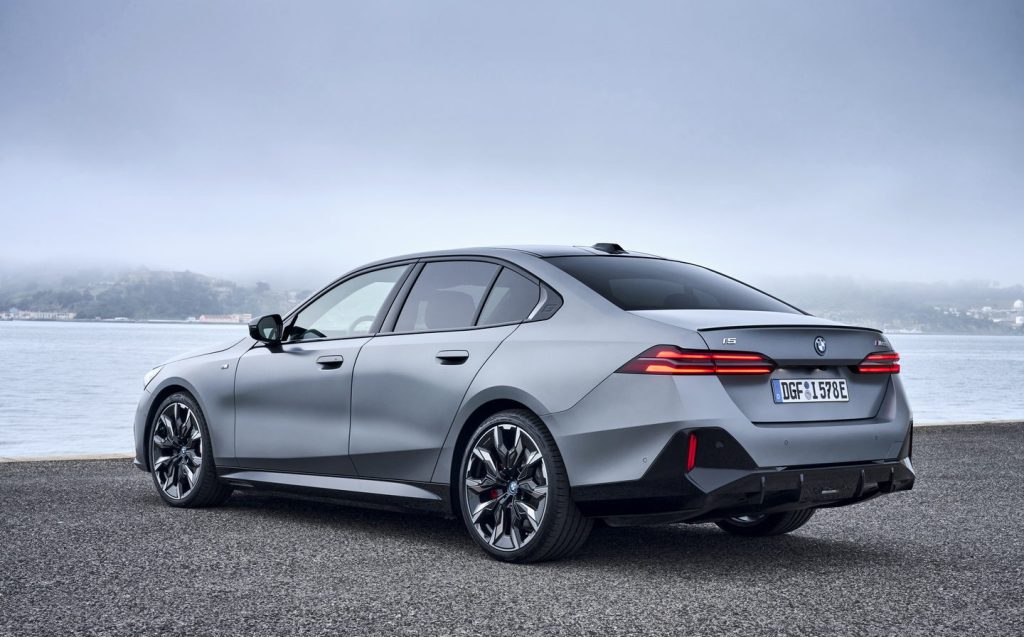
In many ways, the i5 isn’t that remarkable. Not because it isn’t a great car — it is — but because it’s exactly what we expected it to be. Great to drive, well-built overall and very high tech, it’s exactly what the next-generation 5 Series should be, and the fact this version is electric feels like something of a sideshow.
But that’s a sign of just how right BMW has got things with the new 5 Series, and we can’t wait to sample the various other versions, because if they’re as good as this they’ll head straight back to the top of the executive car class.
Related articles
- If you liked our review of the new BMW i5, you might like to read our review of the BMW M3 Touring
- Or, check out the best luxury cars to buy
- Have you seen the new Volvo EX90 SUV?
Latest articles
- Bedeo Defender 110 2024 review: Does electric Landie with in-wheel motors make for a perfect off-roader?
- F1 2024 calendar and race reports: What time the next grand prix starts and what happened in the previous rounds
- BYD Seal U 2024 review: Chinese brand adds plug-in hybrid SUV to its electrified line-up
- New Mini John Cooper Works revs up for Nürburgring 24-hour race debut
- Ineos Grenadier Quartermaster 2024 review: British pick-up is a tough mudder but too flawed to be a real workhorse
- Mini Cooper SE 2024 review: All-new electric hatchback is playing to the crowd
- Jeep Wrangler 2024 review: Impressive off road but you’d still have to be a committed contrarian to buy one
- Around 500 Ford workers in UK could go on strike over cost-of-living pay dispute
- Durham solar car team to take part in 24-hour race with smart tyres and night-driving solution


